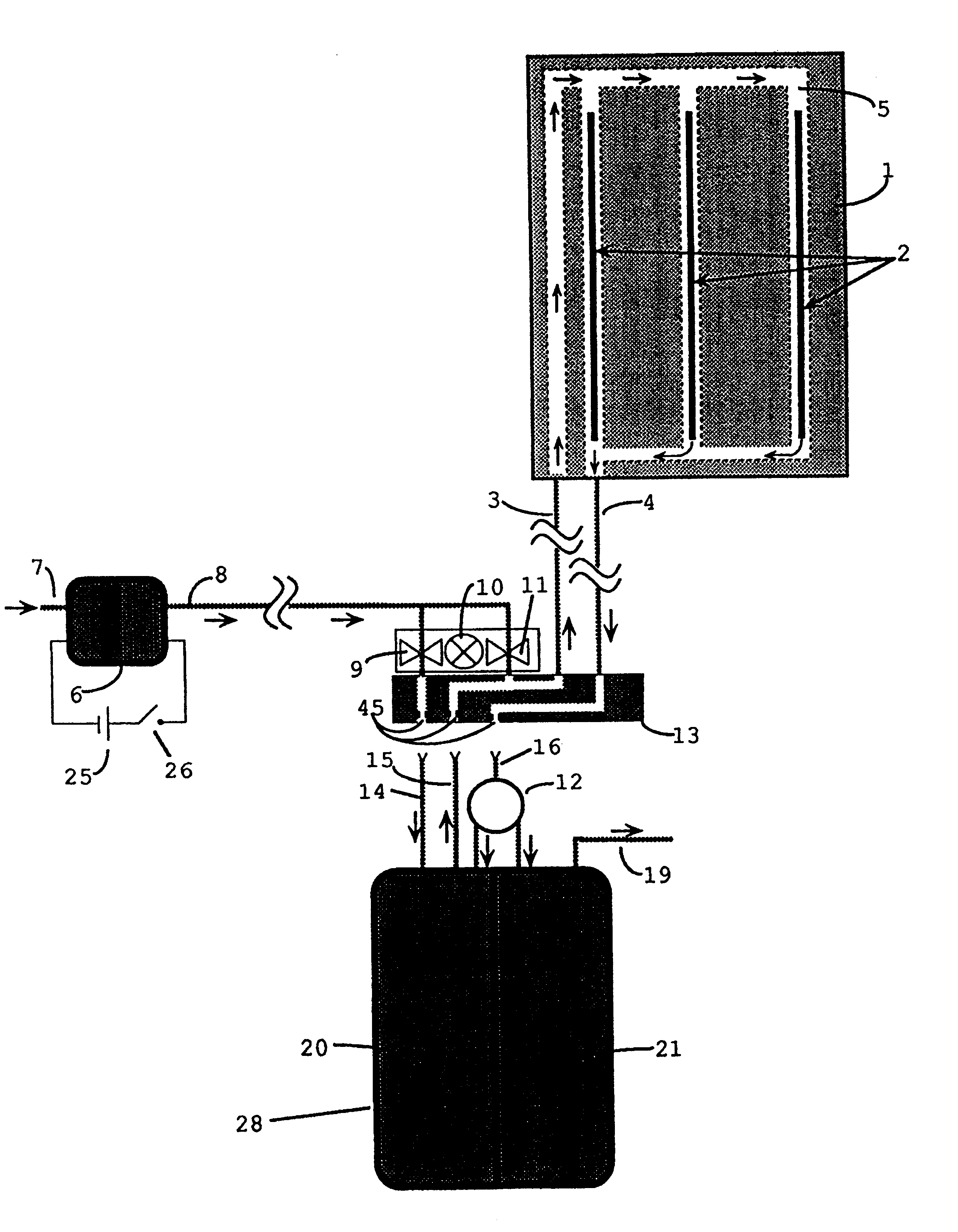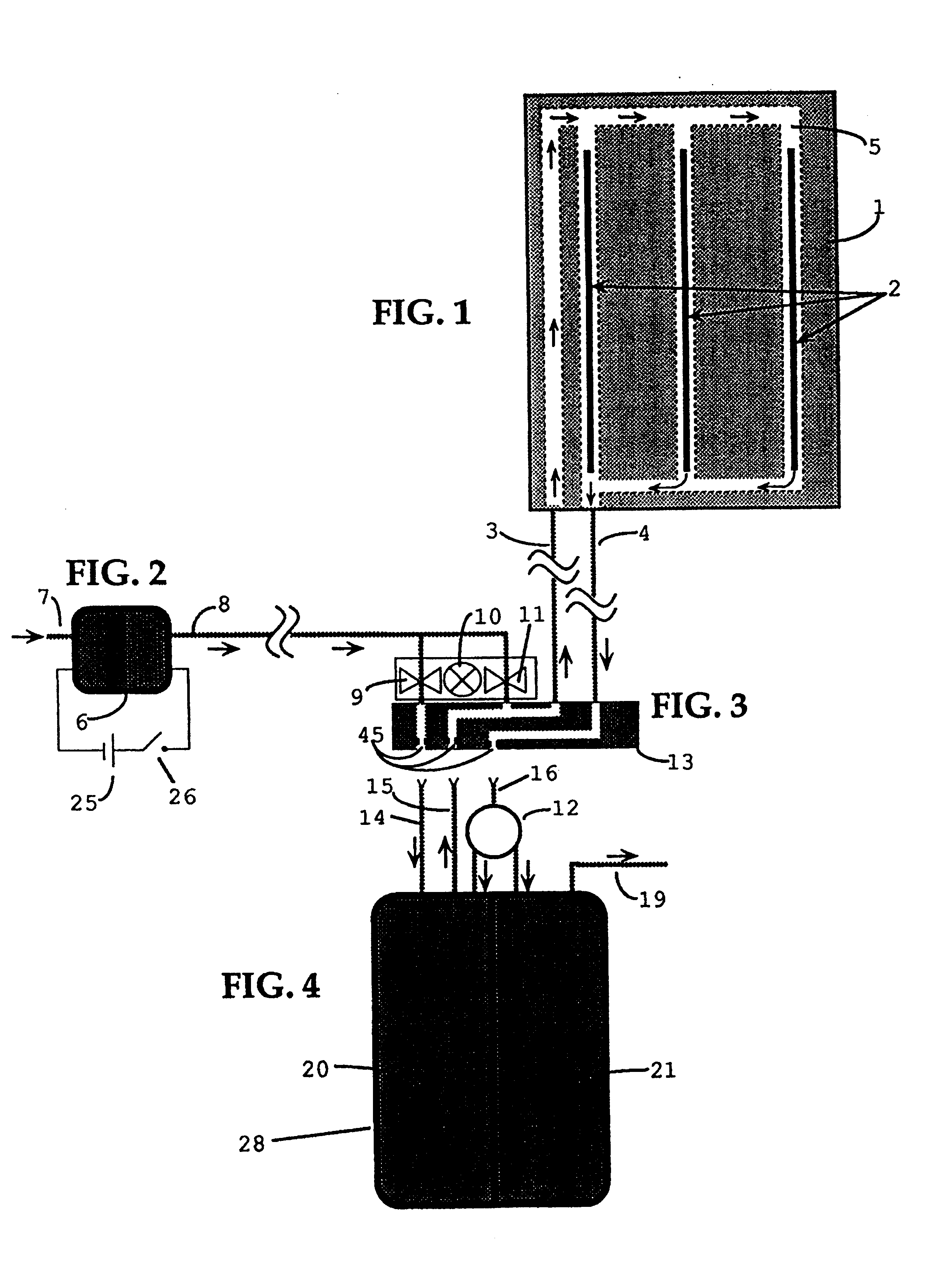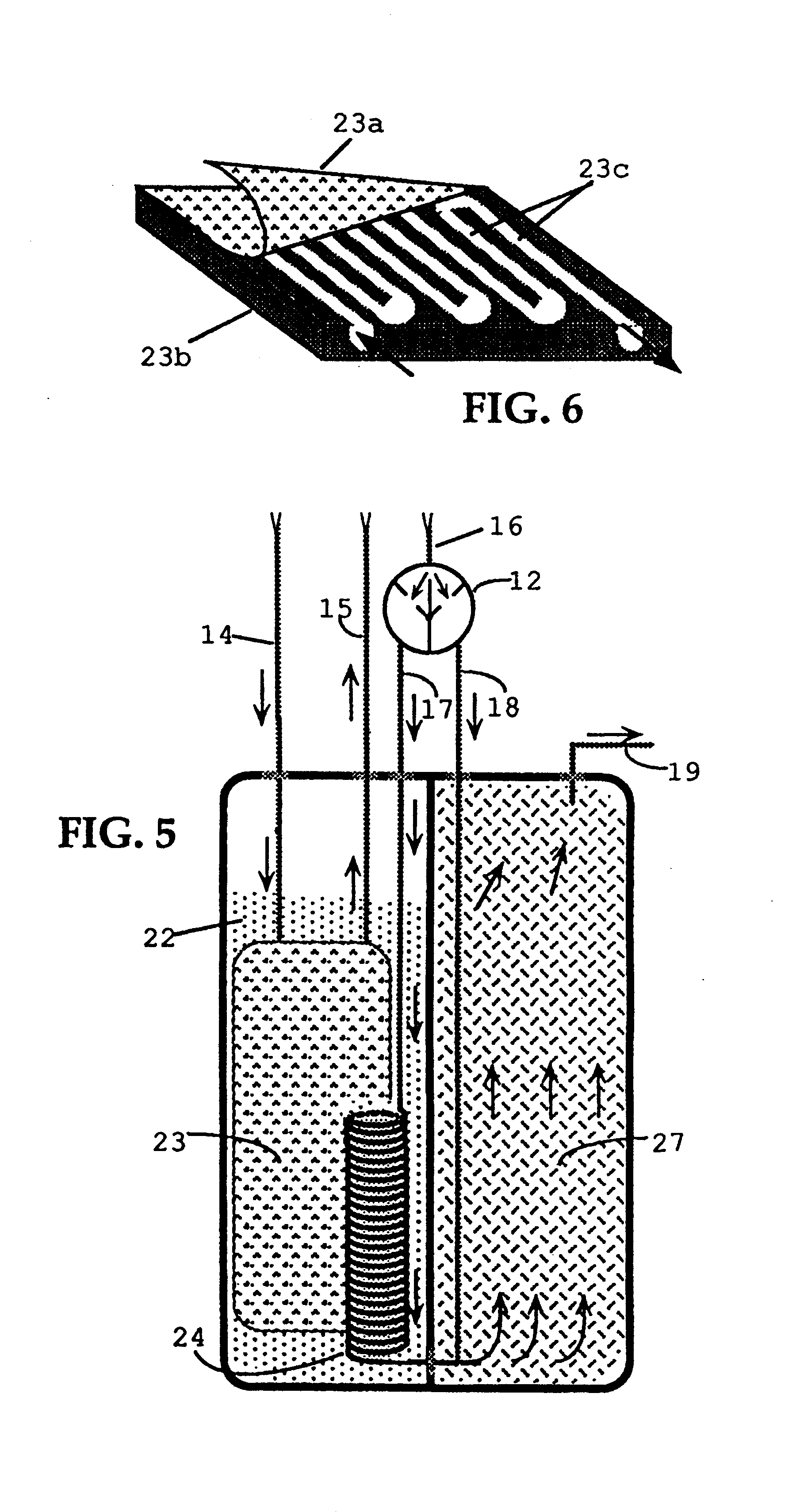Portable heat generating device
a heat generating device and portable technology, applied in the direction of contraceptives, lighting and heating apparatus, combustion types, etc., can solve the problems of terminating the heat generating process, cumbersome and time-consuming process of replacing or regenerating exothermic materials, and depleting exothermic materials
- Summary
- Abstract
- Description
- Claims
- Application Information
AI Technical Summary
Benefits of technology
Problems solved by technology
Method used
Image
Examples
Embodiment Construction
FIGS. 1 and 7 show plan view and perspective view of one embodiment of a heat generating sheet, containing flow channels 5 in a sheet core 1 consisting principally of an elastomeric material. Fuel-air vapor is pumped from a fuel chamber 20, shown in FIG. 4, into flow channels 5, within sheet core 1, containing elongated catalytic heat elements 2. The pumping action is provided by a miniature electric air pump 6, shown in FIG. 2, which is powered by a, dry cell battery 25.
A possible alternative to using dry cell battery 25, is to employ direct electrolytic oxidation of a fuel 22, using a device known as a fuel cell. For instance, if the fuel in fuel chamber 20 is a primary alcohol, such as methanol, the present invention might use a portion of it to operate a miniature fuel cell structure and thus derive a small amount of electrical power (e.g. 1 / 4 to 1 / 2 watt) to drive air pump 6. In this manner, all the energy required to operate this invention could be obtained from a single sourc...
PUM
 Login to View More
Login to View More Abstract
Description
Claims
Application Information
 Login to View More
Login to View More - R&D
- Intellectual Property
- Life Sciences
- Materials
- Tech Scout
- Unparalleled Data Quality
- Higher Quality Content
- 60% Fewer Hallucinations
Browse by: Latest US Patents, China's latest patents, Technical Efficacy Thesaurus, Application Domain, Technology Topic, Popular Technical Reports.
© 2025 PatSnap. All rights reserved.Legal|Privacy policy|Modern Slavery Act Transparency Statement|Sitemap|About US| Contact US: help@patsnap.com



